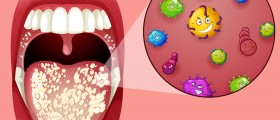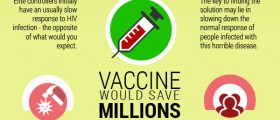
Classification of Candidiasis
Candidiasis, commonly known as yeast infection, is a type of contamination caused by fungus, which lives in the vagina, intestines and the mouth without disrupting the everyday functioning of individuals. Once the immune system gets weakened by an adverse elements, in persons who are prone, the yeast will multiply and start causing problems. The main group of yeast, called Candida, contains around 150 distinctive divisions, but not all are harmful to humans. Of those that do produce adverse effects, there are two main types of infections that differ both in the intensity of the symptoms and consequences and those are the mild and the systematic infections.
The mild types are easily diagnosed, treated and are very widespread, while the systematic usually attack individuals with severely weakened immune systems, such as AIDS and cancer patients and can result in death. The types of candidiasis are further classified into oral, vaginal, perianal, intertrigo, and paronychia, to name a few. The way candidiasis is classified depends on the body part that it is present in, while the areas that could be affected are numerous.
Symptoms and Diagnosis
There are various symptoms of Candidiasis infection and they depend on the area that is infected. For instance, a vaginal infection will manifest itself through itching and excess secretion, while in men it will produce an irritation and sores on the genitals. If the case is that the oral cavity is infected then there will be difficulties in swallowing coupled by white lesions covering the mouth. Oral cavity infections are common in children as well and if they last for more than a couple of weeks a change in treatment is required. In general, candidial infections are exhibited through itching, burning, irritation and an overall uncomfortable feeling. When it comes to diagnosing Candidiasis infections, a culture test will be performed, using a skin sample of the infected area collected by a swab and the culture will be grown for a couple of days in order to zoom in on the organisms which are causing the infection. At the same time, a visual inspection will be done under a microscope and a special solution that will dissolve everything but the yeast cells allowing for a thorough examination.Causes of Candidiasis
Aside from the fact that the agents producing yeast infections discharge live in the body and are activated when the immune system is deficient, there are also bacteria that reside in the same areas and whose excess multiplications lead to the increase of the amount of Candidiasis. Also, harsh detergents and soaps can disturb the vaginal flora, for instance, causing the yeast to develop, while at the same time various hormonal changes can contribute to the infection as well. Hormonal imbalance can be caused by different types of birth control, especially oral contraceptives and pregnancy, making those individuals more prone to candidiasis. When it comes to male yeast infections, those are usually produced by engaging in sexual intercourse with an individual who already has an infection, coupled with the weak immune system of the person. However, it should be noted that genital yeast infections are far less prevalent in men than in women. There are also various medical conditions that make individuals more susceptible to yeast infections. Having a weak immune system caused by diabetes, insufficient diet, stress related problems, and AIDS have all been identified as causes of yeast infections. Other agents include remaining in a wet bikini for a prolonged period of time, as well as eating a diet rich in carbohydrates.
Treatment Options
Treatment for various yeast infections depends also on the area which is diseased. There are many medications that treat the fungus causing candidiasis, such as clotrimazole, fluconazole and ketoconazole, among others. Fluconazole, for instance, has been proven highly beneficial in treating vaginal yeast infections, but not any other kinds. In addition, a drug called gential violet is used to treat the oral infection, but there are those who oppose it, claiming it has been linked to various types of cancers in both humans and animals. As is the case with any other drug based treatment, the fungus can develop resistance to medications used to destroy it. Any kind of pharmacological therapy should be used with caution and if allowed by a doctor coupled with alternative methods of treatment. As far as the alternative treatment goes, changing the daily food regimen results in the diseased recurrences of yeast infections. Lastly, research from the Seattle BioMed Institute shows that the resistance to drugs by the fungus develops as a result of changes that occur in the cells of the adverse elements. Further, investigation also demonstrated that in order to reduce the risk of drug resistance, it is more beneficial to take large doses for a short period of time than to take smaller quantity over a prolonged period.

















Your thoughts on this
Loading...